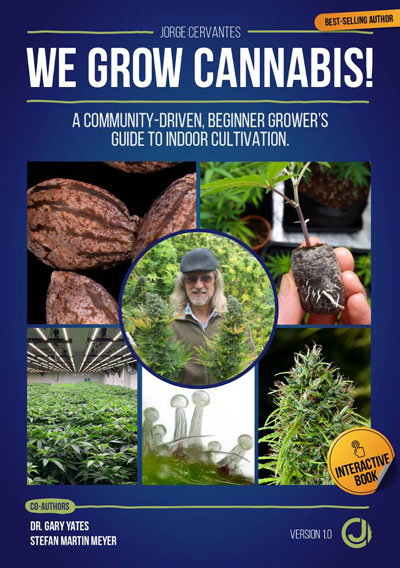
by Jorge Cervantes

Embark on your cannabis cultivation journey with “We Grow Cannabis,” a groundbreaking free eBook by Jorge Cervantes, the celebrated author and cannabis cultivation expert.
Inspired by the community and designed for beginners, this guide captures Jorge’s 40 years of pioneering expertise in a concise 100-page manual, featuring more than 270 vibrant color images.
It’s your comprehensive roadmap to mastering cannabis growth.
Dive deep into the essence of cannabis cultivation with sections on:
Jorge Cervantes, in the beginner grower’s guide chapter on cannabis botany, emphasizes the importance of understanding the basics of cannabis botany to enhance gardening skills and maximize harvest yields.
The chapter delves into the classification of cannabis species, focusing on Cannabis sativa L. and its subspecies, C. indica and C. ruderalis.
It highlights the similarities in traits such as taste, fragrance, and effects among these subspecies. The guide provides an overview of botanic classification, covering nomenclature, physical characteristics like growth habits, branching, root mass, and the geographic origins of these species.
Furthermore, the chapter discusses how simple genetic qualities differentiate CBD-rich, THC-rich, and industrial fiber and cannabis seed varieties. It also touches on flavour and taste and the compounds responsible for them such as terpenes and flavonoids.
The book talks about feminized cannabis and how it is classified botanically in the Plant Kingdom. It does this by looking at Kingdom (Plantae), Division (Magnoliopsida), Order (Rosales), Family (Cannabaceae), and Genus (Cannabis L.).
Understanding these classifications is crucial for growers to cultivate cannabis effectively.
Overall, this chapter provides essential insights into the botanical aspects of cannabis cultivation, from classification to genetic qualities and terpene profiles, offering valuable knowledge for novice growers aiming to produce high-quality cannabis plants at home.
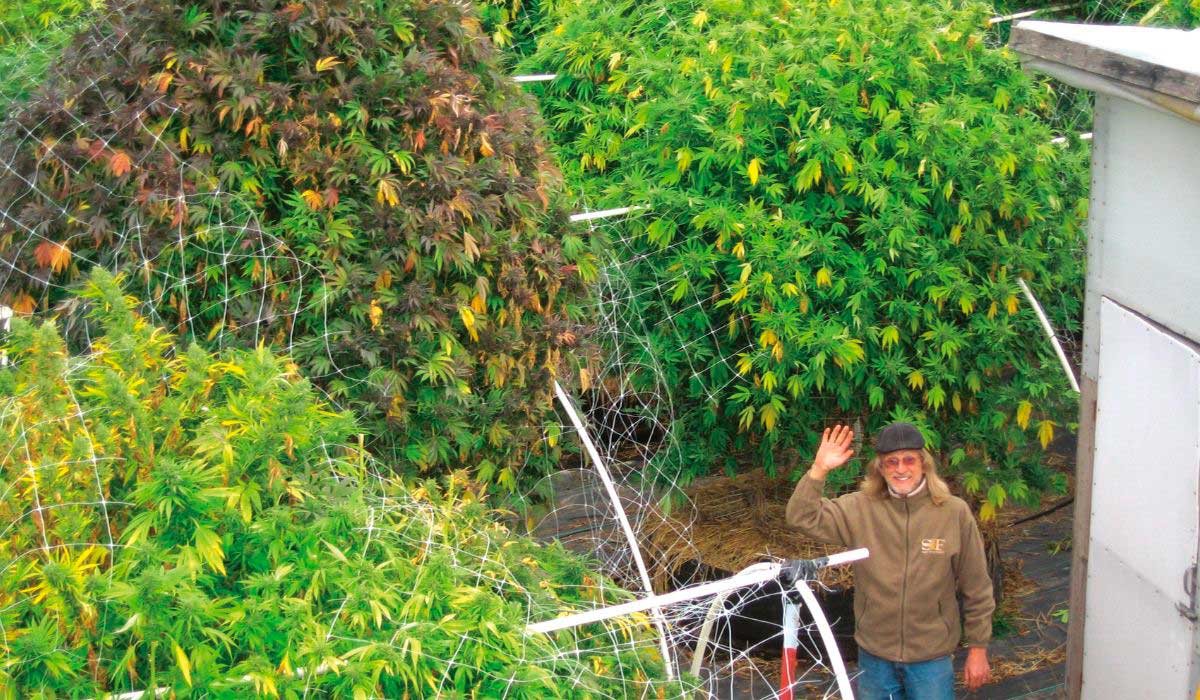
In the chapter “Life Cycle of Cannabis,” the guide provides a comprehensive overview of the plant’s stages from germination to harvest, shedding light on the critical phases of a cannabis plant’s development. The chapter emphasizes the importance of understanding each stage to ensure a successful cultivation process and maximize the plant’s potential.
Germination: The guide explains that germinating cannabis seeds involves stratification and darkness to initiate key metabolic processes for sprouting a seedling. This stage sets the foundation for the plant’s growth.
Vegetative Phase: During this phase, there is a significant increase in biomass and growth, preparing the plant for flowering. While cannabinoids slowly develop, there is no significant medicinal efficacy.
Transitional (Pre-Flowering): This brief period sees a dramatic increase in nutrient intake as the plant prepares for reproduction. Nutrient demand rises, root growth extends, and leaves grow to enhance photosynthesis.
Flowering: The reproductive phase involves hormonal changes triggered by light exposure and photoperiod changes. This stage marks the development of cannabinoids like THC and CBD, with distinct subphases such as flower initiation, mid-flowering, and late flowering/ripening.
Harvesting & Curing: The final stage where resinous buds develop, signaling the culmination of hard work. Different strains have varying flowering times, with some cultivars taking longer than others. Harvesting involves monitoring trichome density and pistil color for optimal timing.
Understanding these stages is crucial for growers to navigate through the cannabis plant’s life cycle effectively, ensuring proper care and maximizing the quality of the plant material for the final harvest.
By following these guidelines, growers can cultivate healthy cannabis plants and achieve successful outcomes in their cultivation endeavors.
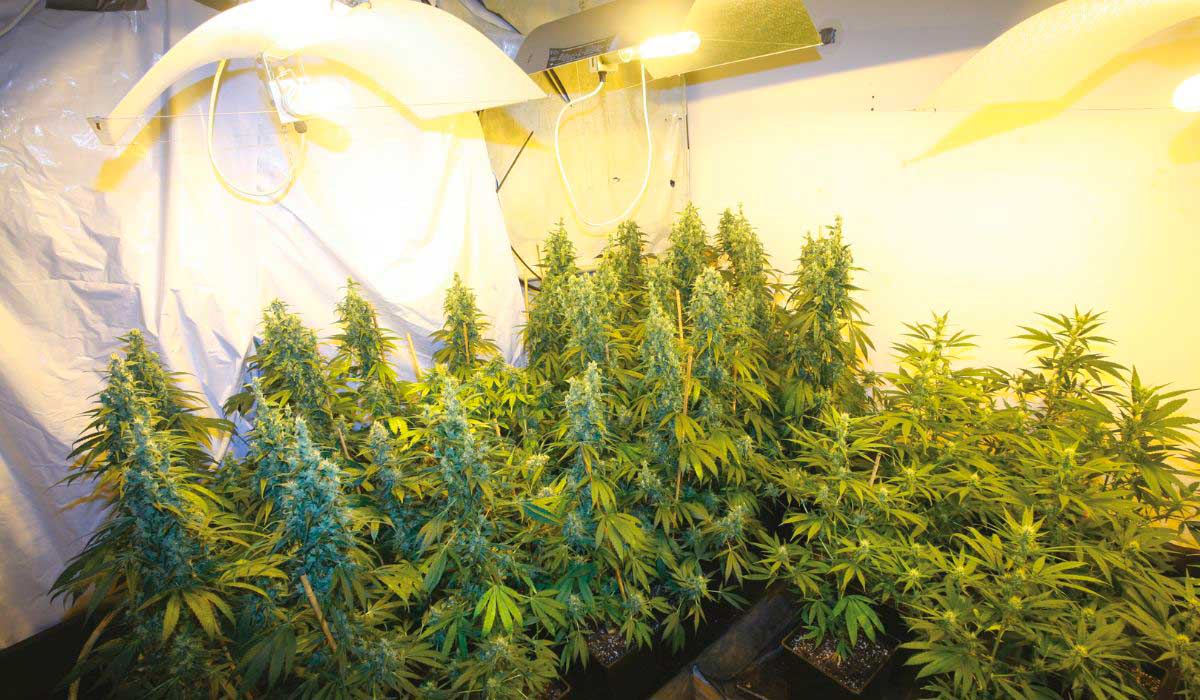
The chapter “Cannabis Seeds & Seedlings” provides a detailed guide on the germination and growth of cannabis plants, covering various types of cannabis seeds and their characteristics. Here is a summary based on the provided search results:
Seed Types: The guide outlines different types of cannabis seeds, including Regular, Feminized, Auto-flowering, CBD Cannabis, and Industrial Fiber Hemp. Each seed type has specific characteristics and days to mature, ranging from 70 to 220 days.
Germination Techniques: The chapter discusses various germination techniques, such as the paper towel and glass of water methods. It emphasizes providing the right conditions for seeds to sprout successfully.
Seedling Stage: It highlights the fragility of cannabis seedlings and the importance of understanding their specific needs for optimal growth. Light, temperature, and humidity are crucial in nurturing healthy seedlings.
Genetics & Medium: The guide stresses the significance of selecting the right genetics, containers, and medium for seedlings. It is recommended that well-aerated soil with proper pH levels be used and amendments added to ensure drainage and nutrient retention.
Pots & Nutrients: Different potting approaches are suggested for autoflowering and feminized seedlings. It advises against planting seedlings in soil rich in nutrients and recommends waiting to feed them until they have developed several sets of true leaves.
Understanding these aspects of cannabis seeds and seedlings to grow plants is essential for growers to initiate successful cultivation practices, ensure healthy plant development, and ultimately achieve a bountiful harvest.
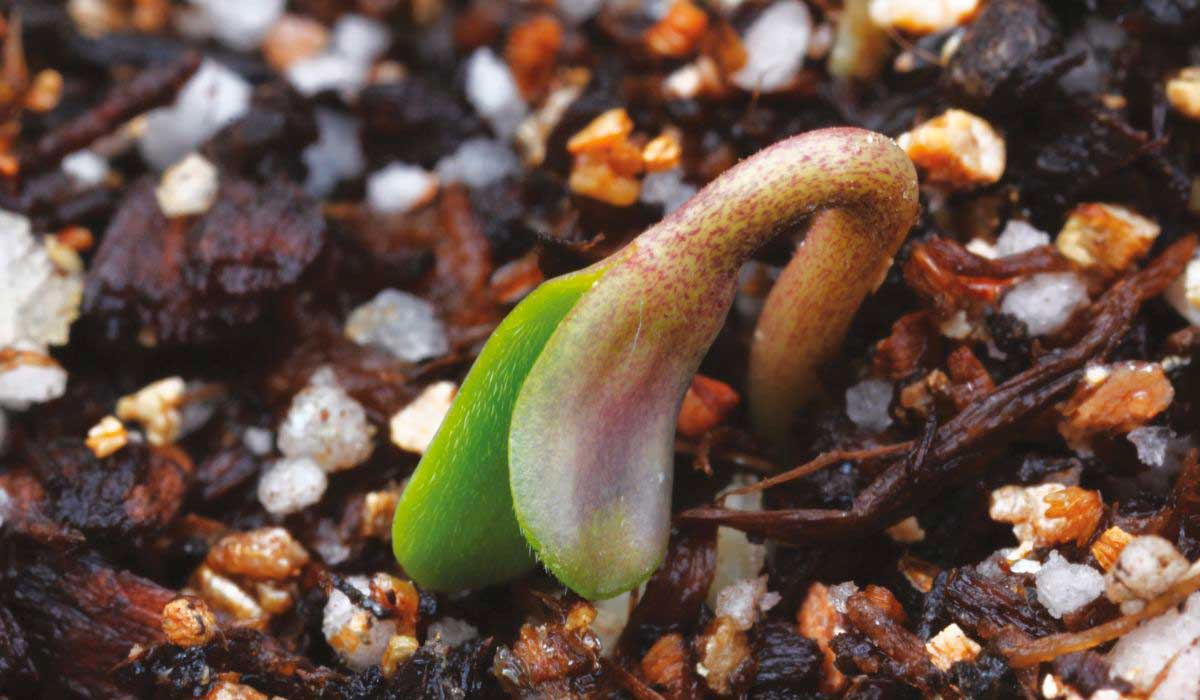
The chapter “Plan Your Garden” from the provided source emphasizes the importance of meticulous planning before embarking on cannabis cultivation, whether indoors or outdoors. Here is a summary based on the search results:
Setting Goals: The guide prompts growers to define their goals before starting the cultivation process. Whether aiming to grow a single crop from seed to harvest, maintain a perpetual crop with regular harvests, or establish a commercial garden, clear objectives will shape the garden setup and material requirements.
Budgeting: It advises setting a budget that aligns with the grower’s needs. Starting with a small area for seedlings or investing in equipment for a larger operation requires financial planning to ensure a successful and sustainable cultivation endeavor.
Indoor vs. Outdoor Gardening: The decision between indoor and outdoor cultivation impacts the garden area setup and supply needs. Indoor growers can benefit from early starts by germinating plants indoors before moving them outside, while outdoor growers must consider seasonal variations and natural light cycles.
Materials & Supplies: The type of garden area, whether indoor or outdoor, dictates the materials and supplies required for successful cultivation. Proper planning ensures that growers have everything they need to support healthy plant growth and optimize harvest yields.
By carefully planning their cannabis garden based on goals, budget constraints, and environmental factors, growers can set themselves up for success and increase their chances of achieving thriving plants and bountiful harvests.

The chapter “Grow Room Setup” covers the essential elements required for an indoor cannabis garden to thrive, emphasizing the significance of providing optimal conditions for light, air, water, nutrients, and substrate. Here is a summary based on the search results:
Essential Elements: The guide stresses the importance of ensuring that all elements crucial for plant growth, including light, air, water, nutrients, and growing medium, are functioning at 100% efficiency. It highlights that any deficiency in one element can hinder the overall growth potential of the cannabis plants.
Setting Up: When setting up a grow room, it is recommended to choose a location that naturally stays cool with easy access to outlets for air ventilation and nearby electrical outlets for essential equipment like lights and fans. A water source attached to a hose can significantly reduce manual labor in watering plants.
Maintaining Efficiency: The chapter introduces the acronym “LAWNS” (Light, Air, Water, Nutrients, Substrate) as a reminder of the five essential variables that must be controlled to ensure a successful harvest. It emphasizes the importance of maintaining each of these variables to achieve a heavy cannabis crop.
Ventilation & Lighting: Proper ventilation is crucial for maintaining the grow room’s temperature, humidity, and CO2 content. The guide mentions oscillating fans, exhaust fans, and carbon filters to ensure adequate air circulation. Additionally, it discusses different lighting options available for indoor cannabis cultivation.
By meticulously planning and setting up a grow room that optimizes light exposure, air circulation, water supply, nutrient delivery, and substrate quality, growers can create an environment conducive to healthy plant growth and maximize harvest yields.
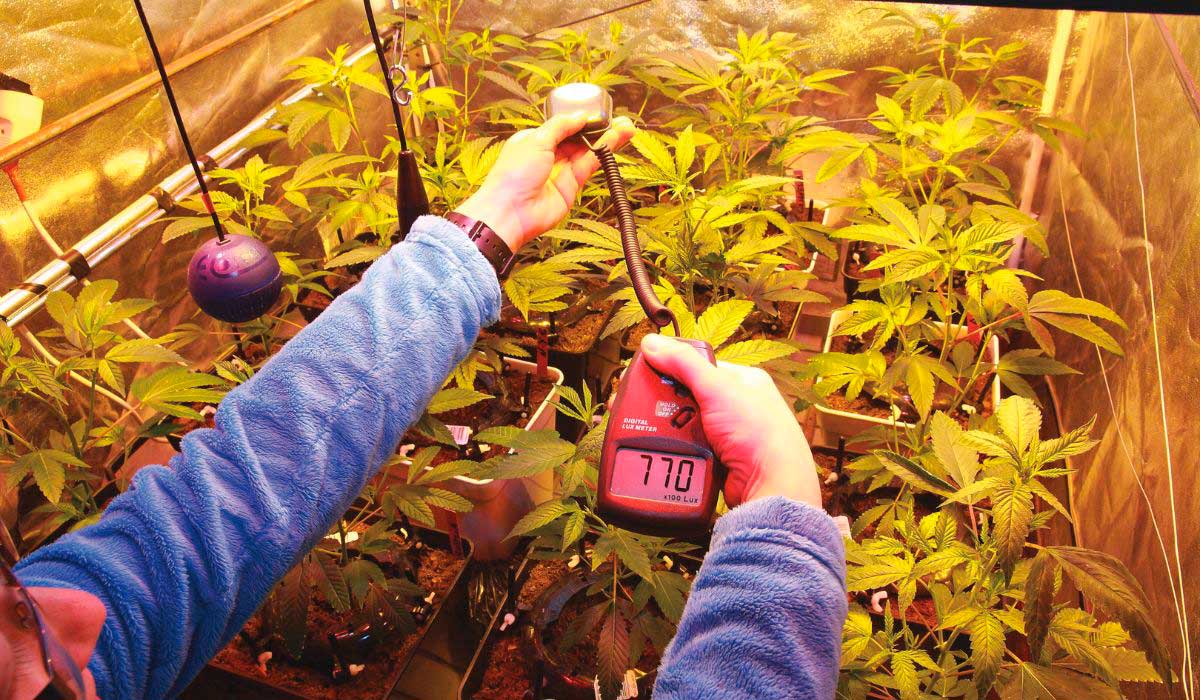
The chapter “Diseases, Pests & Problems” from the provided source offers comprehensive information on identifying and addressing common issues that can affect cannabis plants during cultivation. Here is a summary based on the search results:
Prevention: The guide emphasizes preventing diseases and pests in cannabis cultivation. Maintaining cleanliness, monitoring plant health regularly, and implementing preventive measures like using yellow sticky traps indoors can help avoid infestations.
Identification & Solutions: It provides detailed information on identifying various pests and diseases affecting cannabis plants, such as aphids, barnacles, broad mites, caterpillars, white powdery mold, and more. The guide offers solutions like neem oil, spinosad products, and natural predators to combat these issues effectively.
Control Methods: Different control methods are discussed for managing pests organically. The guide suggests early detection, regular monitoring, avoiding clones/cuttings from unknown sources, and maintaining a clean grow room as effective strategies to prevent infestations.
Common Pests & Diseases: The chapter lists common pests like aphids, spider mites, fungus gnats, thrips, leaf miners, and diseases like powdery mildew that can impact cannabis plants. It provides insights into identifying these issues and offers solutions to combat them successfully.
Treatment Options: Various treatment options are recommended for specific pests and diseases. For instance, using neem oil for soil treatment to control fungus gnats or spraying insecticidal soaps and neem oil to minimize aphid activity are suggested solutions to combat infestations effectively.
By understanding the common pests and diseases that can affect cannabis plants, growers can proactively implement preventive measures and appropriate treatments to ensure the health and vitality of weed plants and their crops throughout the cultivation process.
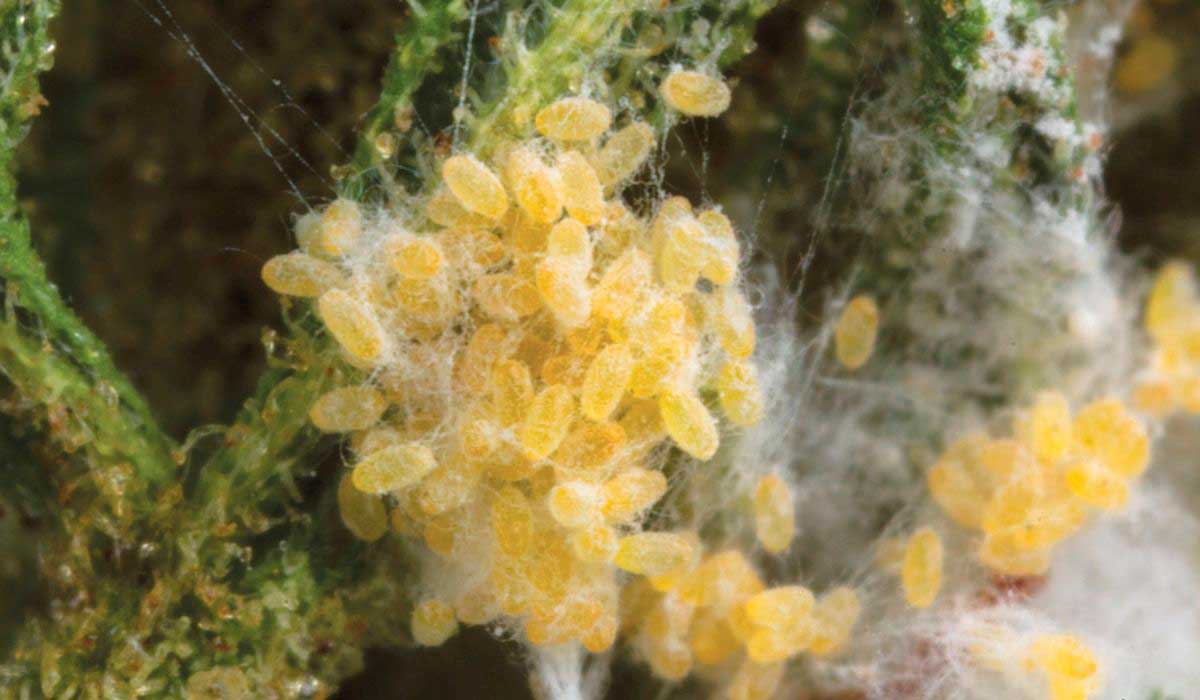
The chapter “Harvesting Cannabis” provides crucial insights into the optimal timing and techniques for harvesting cannabis plants to preserve their potency, aroma, and flavor. Here is a summary based on the search results:
Peak Ripeness: Harvesting cannabis at peak ripeness is essential, with a critical window of about 5-7 days for optimal harvest. Some growers manicure harvested buds before even drying to preserve THC content. After drying, curing the buds enhances aroma and flavor, similar to aging wine. Proper storage post-cure ensures the retention of essential qualities.
Odor Control: To minimize pungent marijuana odors during harvest, keeping the drying and trimming room well-ventilated is recommended to prevent lingering fragrances. Maintaining cool temperatures below 70°F (21°C) helps release fewer pungent aromas from essential cannabis oils. An air conditioner and carbon filter can effectively manage odors in sealed rooms.
Pre-Harvest Preparation: Irrigating plants with plain water in the last 7-10 days before harvest is advised. This practice helps prepare the plants for harvest by flushing out excess nutrients and enhancing the final product’s quality.
Harvest Timing: Determining the right time to harvest cannabis flowers is crucial for optimizing potency and yield. Harvesting too early can lead to potency loss, while harvesting too late may result in high levels of CBN. Growers often use nutrient-flushing processes to stress plants, boost THC levels, and ensure optimal harvest timing.
Tools & Techniques: The chapter outlines step-by-step instructions for harvesting cannabis plants, including cutting branches near nodes, inspecting trichomes with magnifying lenses, preparing the grow space for harvest, gathering necessary tools like trimming shears and jars for curing, and ensuring proper environmental conditions for a successful harvest.
By following these guidelines on harvesting cannabis at peak ripeness, controlling odors during the growing process itself preparing plants pre-harvest, determining optimal harvest timing, and employing proper tools and techniques, growers can ensure a successful harvest with potent, flavorful buds that have been carefully preserved and cured.
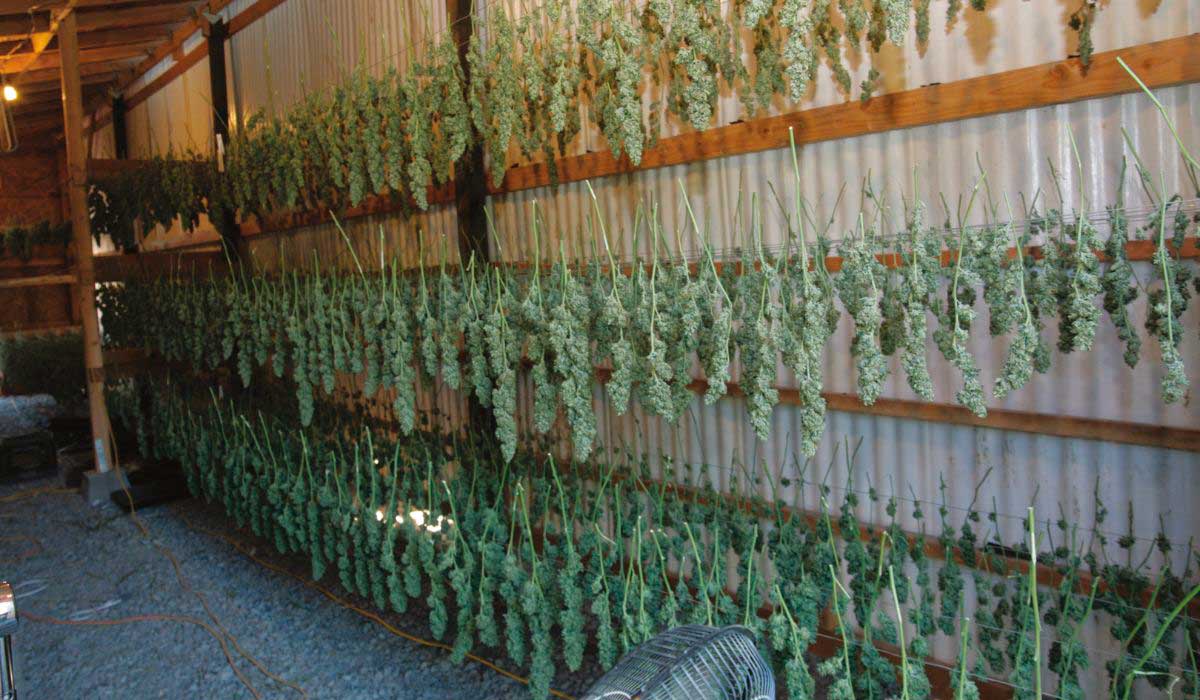
The chapter “12-Week Cannabis Grow Schedule: Seed to Harvest Guide” provides a detailed week-by-week plan for cultivating cannabis plants from seedlings to harvest. Here is a summary based on the search results:
By following this comprehensive 12-week cannabis grow schedule that includes detailed instructions on light levels, environmental conditions, watering schedules, nutrient application, and troubleshooting practices, growers can effectively nurture their plants from seedlings to harvest and achieve successful outcomes in their cultivation endeavors.
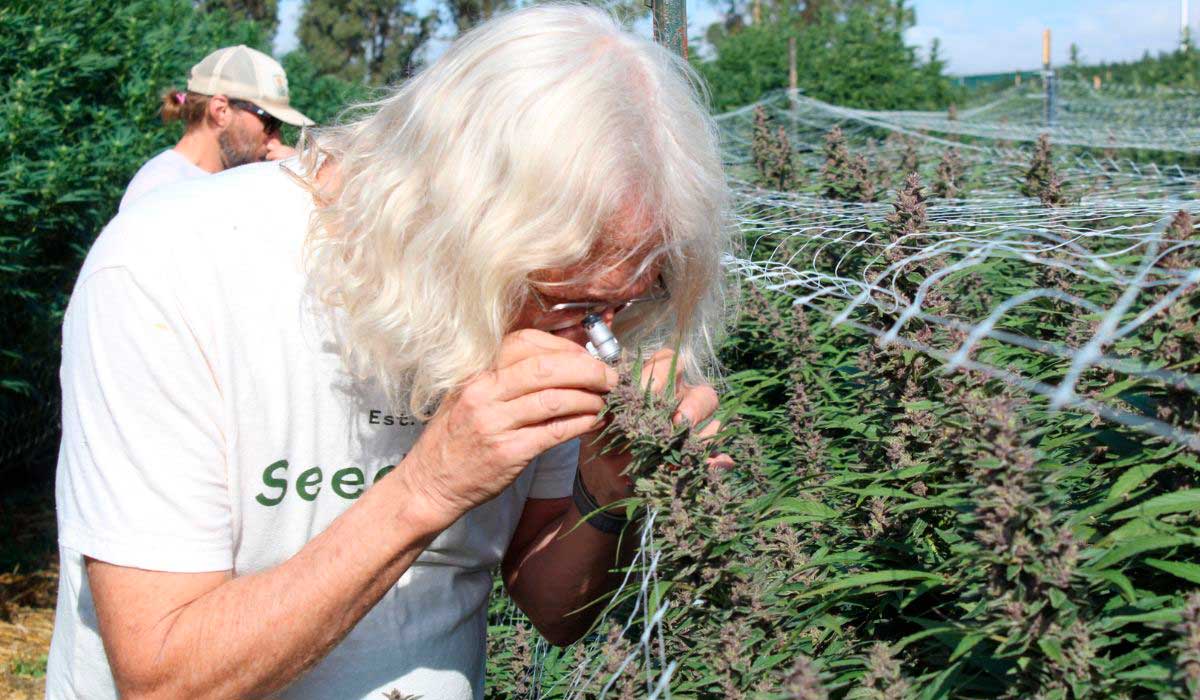
“We Grow Cannabis!” is not just a cultivation guide; it’s a culmination of decades of pioneering research and hands-on experience in the cannabis cultivation field. Jorge Cervantes, Dr. Gary Yates, and Stefan Martin Meyer are at the helm of this comprehensive resource, each bringing a unique blend of expertise, authority, and trustworthiness.
Jorge Cervantes, a figure synonymous with being at the forefront of cannabis knowledge, has spent over four decades honing and sharing his expertise.
Through his prolific output of over 50 books and DVDs, translated into 8 languages, Jorge has cemented his position as a pivotal educator within the global cannabis community.
His cornerstone publication, “Marijuana Horticulture: The Indoor/Outdoor Medical Grower’s Bible,” stands as a testament to his deep understanding and dedication, offering invaluable insights for growers at every level.
Building on this legacy, “The Cannabis Encyclopedia” emerges as Jorge’s most ambitious and comprehensive work to date.
This magnum opus not only encapsulates the breadth of Jorge’s knowledge but is also meticulously structured to address the evolving landscape of cannabis cultivation.
The Cannabis Encyclopedia serves as a definitive guide, spanning from foundational principles to cutting-edge cultivation techniques, all while emphasizing organic practices and sustainability.
The encyclopedia is meticulously designed with both the seasoned cultivator and the novice in mind, ensuring accessibility to a wide audience.
Each chapter is thoughtfully curated to cover critical aspects of cannabis cultivation, from selecting the right strains for specific medical needs to the intricacies of soil composition and pest management.
In addition to its practical guidance, “The Cannabis Encyclopedia” stands as a beacon for advocacy, pushing forward the conversation on cannabis legalization and the importance of safe, responsible cultivation practices.
Jorge’s work, through this encyclopedia, not only educates but also empowers individuals to approach cannabis cultivation with respect, knowledge, and an unwavering commitment to excellence.

Accompanying Jorge, Dr. Gary Yates brings scientific rigor to “We Grow Cannabis!” With a career spanning over two decades, Dr. Yates’s expertise in plant science, genetic problem-solving, and pathogen mitigation provides readers with insights into the most advanced cultivation techniques.
His background as a micro-grower and plant health assessor ensures that the guide covers the latest in technology, equipment, and scientific advances, cementing the book’s place as a cutting-edge resource for cannabis cultivation.

Stefan Martin Meyer‘s journey from the Swiss Alps to the forefront of the medical cannabis research and cultivation scene adds a strategic layer to the guide.
As a co-founder of Phytoplant Research SL and a key figure in Plena Global, Stefan’s experience in securing the first research license for medical cannabis in Spain and leading cultivation projects in Colombia provides readers with a global perspective on cannabis cultivation.
Over the past two decades, his work with Jorge has reinforced the guide’s foundation in practical cultivation techniques and strategic business insights in the cannabis sector.
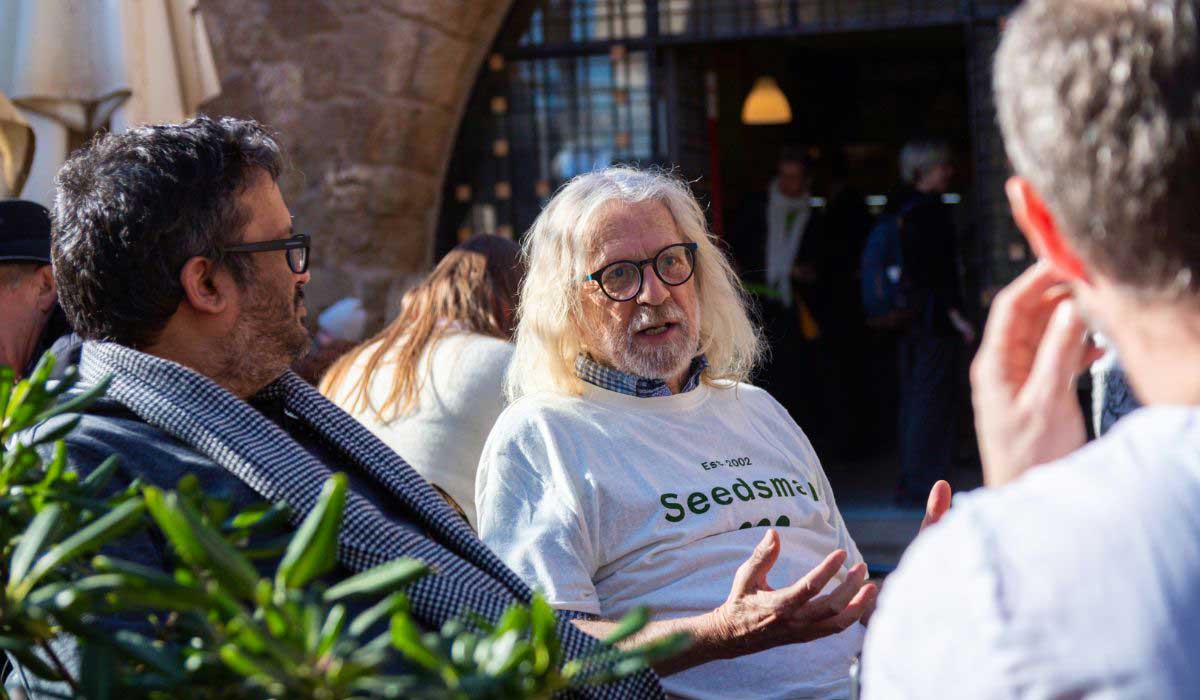
Combining Jorge Cervantes’s extensive hands-on experience with Dr. Gary Yates’s scientific understanding and Stefan Martin Meyer’s strategic insights, “We Grow Cannabis” offers readers a holistic view of cannabis cultivation.
This unique blend of expertise, authoritativeness, and trustworthiness establishes it as a premier resource for anyone looking into cannabis cultivation.

Diving into the world of cannabis cultivation can be daunting for beginners, but with “We Grow Cannabis!” by Jorge Cervantes, Dr. Gary Yates, and Stefan Martin Meyer, you’re equipped with everything you need to start your journey.
This guide isn’t just a manual; it’s a comprehensive toolkit that caters to both novices and experienced growers, making it the perfect starting point for anyone interested in growing cannabis.
Foundational Knowledge and Advanced Techniques: From the basics of botany and lifecycle to complex topics like garden planning and pest management, this guide covers essential cannabis cultivation knowledge. Dr. Gary Yates’s scientific rigor and Stefan Martin Meyer’s strategic insights complement Jorge Cervantes’ meticulous coverage of cannabis essentials by giving readers a strong foundation and cutting-edge cultivation techniques.
Practical Tips for an Enhanced Cannabis Experience: Beyond cultivation, “We Grow Cannabis!” offers insights into enhancing your cannabis experience, covering topics like the differences between indica and sativa strains, the use of grinders and bongs, and organizing and securing cannabis storage effectively.
Learn from Cultivation Legends: With Jorge Cervantes’s extensive 40-year career in cannabis cultivation, Dr. Gary Yates’s expertise in plant science and genetics, and Stefan Martin Meyer’s strategic background in the cannabis research and cultivation sector, this guide offers an authoritative resource. Their collective experience and knowledge provide readers with a comprehensive view of cannabis cultivation, from seed to harvest.
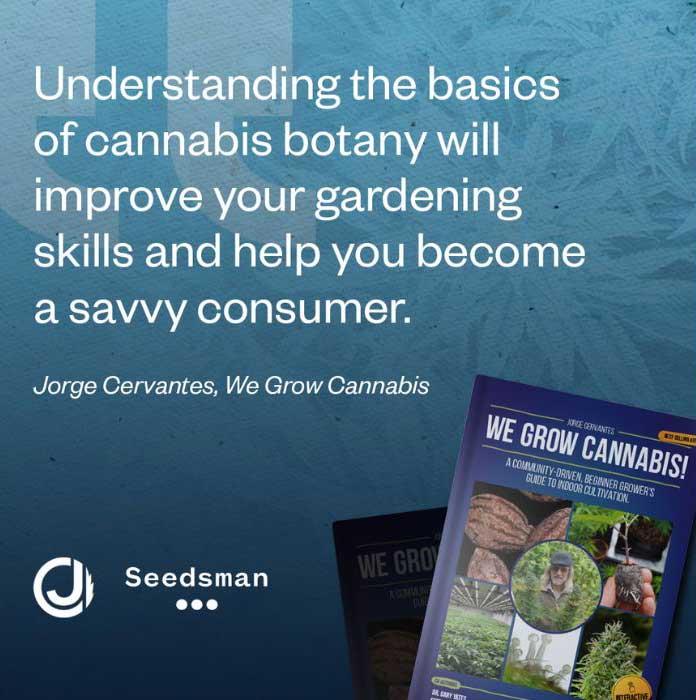
Embark on an enriching journey into the realm of cannabis cultivation with “We Grow Cannabis!” You are not merely reading a guide; rather, you are joining a vibrant, international community of growers, enthusiasts, and experts who are all dedicated to growing cannabis.
This network spans continents, connecting novices and seasoned cultivators alike, offering a platform to exchange knowledge, experiences, and the sheer joy of growing marijuana.
Share Experiences: Whether celebrating your first successful harvest or seeking advice on advanced cultivation techniques, our community is here to share in your journey.
Learn from Peers: Benefit from the collective wisdom of thousands of growers worldwide. Discover new tips, tricks, and insights to help you overcome challenges and enhance your cultivation practices.
Stay Updated: The world of cannabis cultivation is ever-evolving. By joining our community, you’ll stay at the forefront of the latest trends, research, and innovations in cannabis horticulture.
Support and Inspiration: Find encouragement and motivation from a community that understands the ups and downs of cannabis cultivation. Here, you’ll never be alone in your gardening adventures.
Ready to dive into the world of cannabis cultivation with a supportive community by your side? We’re excited to welcome you! To get started, reach out and connect with us.
Share your stories, ask your questions, or say hello. You can contact us directly at [email protected] – let’s cultivate knowledge and growth together.
Download your free copy of “We Grow Cannabis“ and start your journey to becoming a cannabis expert under Jorge Cervantes’ guidance.
Join thousands of successful growers who began their journey with ‘We Grow Cannabis!’ Download now and become part of a global community dedicated to excellence in cannabis.
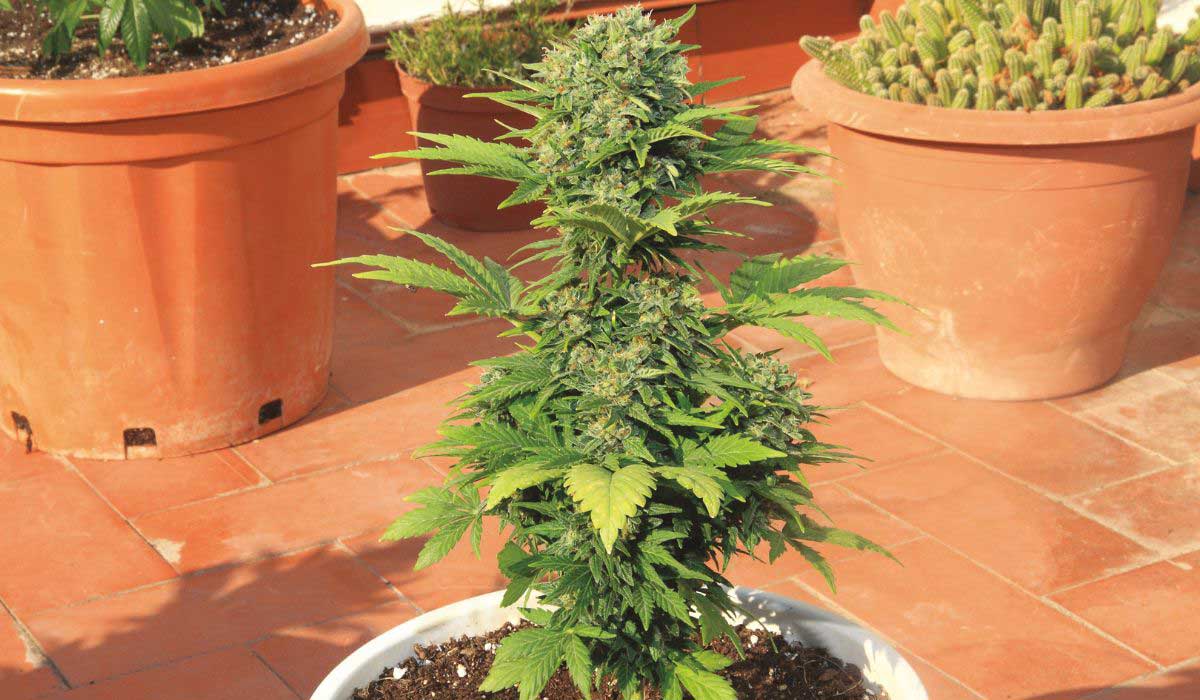
The life cycle of a cannabis plant includes the seedling stage, vegetative stage, flowering stage, and harvesting. Understanding each phase of weed plants is crucial for successful cannabis cultivation, from germinating cannabis seeds to nurturing healthy plants through their growth cycles. Learn how to read and fully understand your marijuana plant.
Male plants produce pollen sacs, while female plants produce buds rich in cannabinoids. Detecting plant gender early, especially during the pre-flowering stage, female plant has is vital to prevent male plants from pollinating females unless seed production is your goal. Identifying male vs. female cannabis plants is crucial to ensure your garden is full of bud-producing females when growing marijuana.
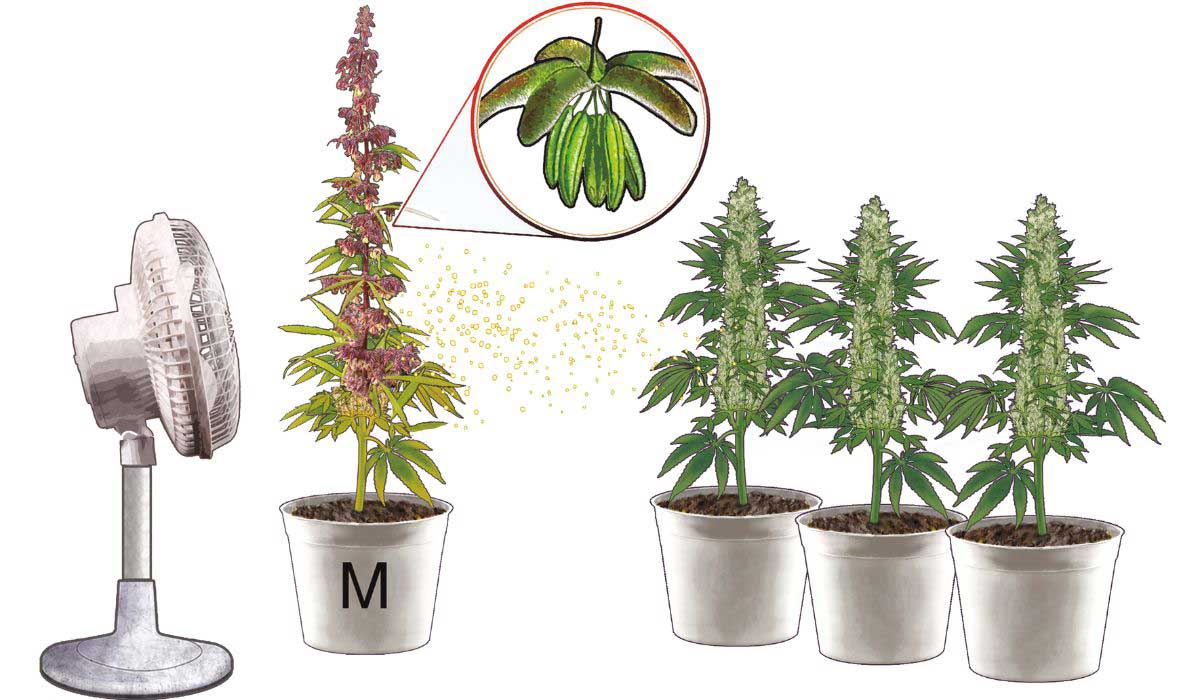
The flowering stage is critical as this is when female plants produce buds. This phase requires a light cycle adjustment to 12 hours of light and 12 hours of darkness to trigger and support flower development in marijuana. The marijuana growing process can also be different when using automatic seeds that do not require a change in photoperiod for the weed plants to start flowering.
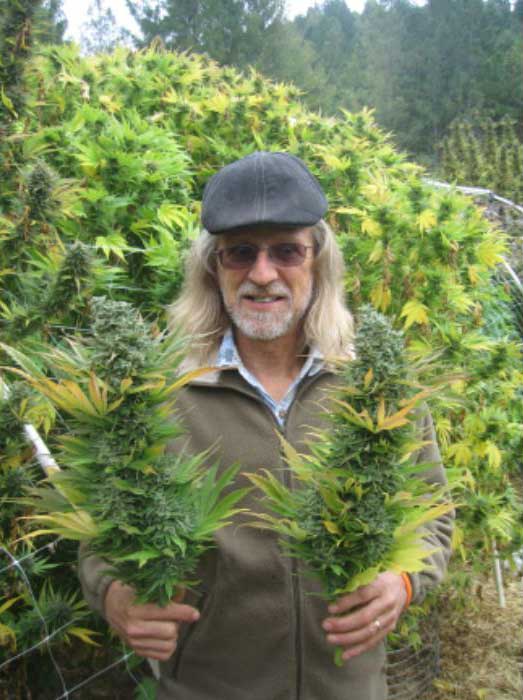
Yes, indoor marijuana growing allows for controlled environmental conditions, including temperature, light cycle, and humidity, which are essential for cultivating healthy marijuana plants. Indoor growers can use grow lights to ensure fresh air circulation and mimic natural conditions.
Feminized seeds are bred to produce only female plants, which are desired for their bud production. Using feminized seeds eliminates the need to detect plant gender and remove male plants, making the marijuana plant growing process more efficient for those looking to grow cannabis for buds.
The number of cannabis plants you can grow at home varies based on local laws and space availability. Check your region’s regulations on homegrown cannabis and outdoor cannabis cultivation to stay compliant.
A weed plant can thrive in various growing mediums, from natural soil rich in organic nutrients to hydroponic systems with a nutrient solution. The choice depends on your setup to grow marijuana and whether you’re growing cannabis indoors or outdoors.
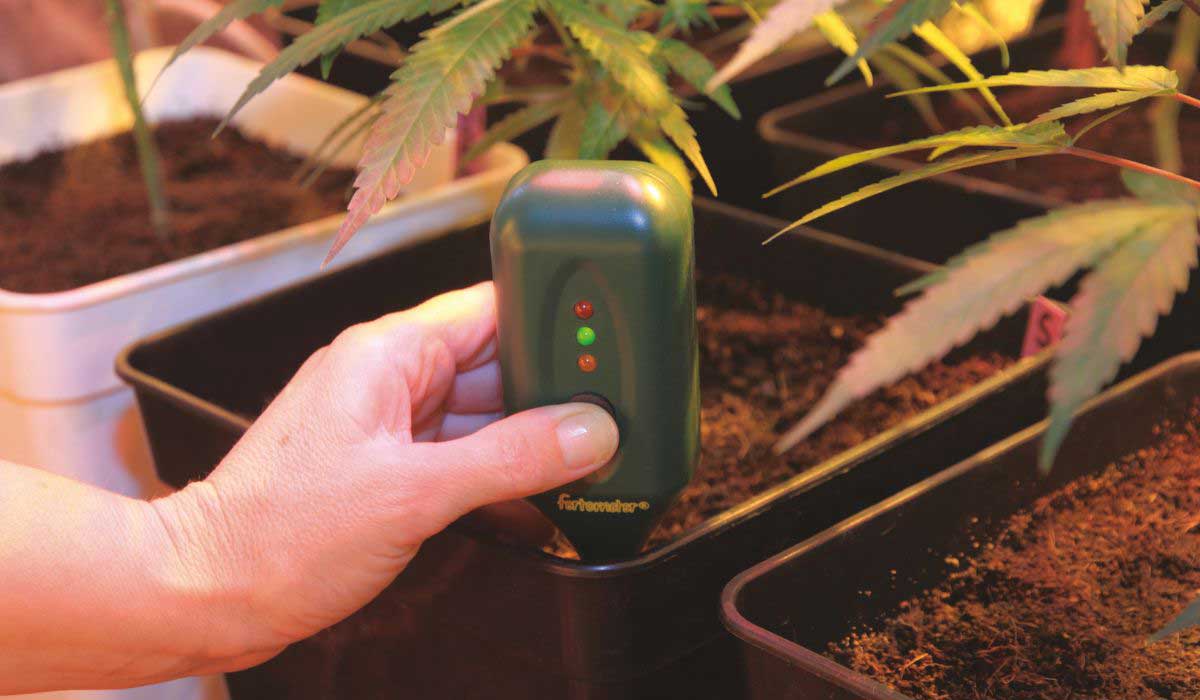
Whether you’re growing marijuana indoors or outdoors, ensuring your plant receives adequate hours of light is crucial for vegetative growth and flowering. Indoor grow setups often use grow lights, while outdoor growers must consider the sun’s path and outdoor growing conditions.
Growing cannabis outdoors utilizes natural sunlight, which can lead to vigorous plant growth and significant cost savings. Outdoor cultivation to grow marijuana also allows for larger plant size due to unrestricted root growth in the natural soil.
Selecting cannabis strains should be based on your cultivation environment (indoor vs. outdoor), desired effects (indica vs. sativa plants), and experience level. Some cannabis strains are more suited to beginners, while others may require more care and are better suited for experienced growers.
Growing your weed can be as simple or complex as you make it. Beginners can achieve successful results with basic setups using natural soil, organic nutrients, and sufficient light. However, advanced equipment like grow lights and hydroponic systems can enhance the grow weed growing process and yields.
Maintaining optimal nutrient levels involves regular monitoring of the nutrient solution in hydroponic systems or soil nutrients in traditional setups. Adjustments should be made based on the plant’s growth stage, with the vegetative phase of plants requiring different nutrient ratios than plants in the flowering phase.
The vegetative stage is crucial for establishing a solid foundation for the plant’s future bud production. During this phase, cannabis plants focus on leaf and root growth, which is essential for supporting buds’ weight during the flowering stage. Indoor growers should ensure their plants receive 18-24 hours of light to promote vigorous vegetative growth.
The early flowering stage is when cannabis plants begin to show their sex. Identifying male plants early is vital to prevent them from pollinating female plants, as female plants produce the buds growers desire. The pre-flowering signs of male and female plants can distinguish them from one another; male plants produce pollen sacs, while female plants produce pistils.
Maximizing bud production involves proper light exposure, nutrient management, and sometimes training plants to increase light penetration and airflow around the buds. Using feminized seeds can also ensure that all your plants are female, focusing your efforts on bud-producing plants.
Grow lights are essential for indoor cultivation, providing the necessary spectrum of light that cannabis plants require for photosynthesis. Quality grow lights can mimic the sun’s spectrum, encouraging healthy plant growth and allowing indoor growers to control the light cycle, which is critical for inducing the flowering phase.
Outdoor growing can sometimes yield more per plant than indoors, due to the plants’ ability to grow more significantly in natural sunlight and soil. However, indoor cultivation allows for more controlled conditions, leading to higher-quality buds and multiple yearly harvests.
Selecting the right cannabis strains involves considering your growing environment (indoor vs. outdoor), climate (for outdoor growers), and desired effects (THC vs. CBD, Indica vs. Sativa), research strains to find those best suited to your conditions and goals.
Healthy root growth is vital for the overall health of cannabis plants. Roots absorb water and nutrients from the soil or growing medium, supporting plant growth, stability, and health. Ensuring good root health with proper watering, aeration, and nutrient supply is essential for successful cannabis cultivation.
Training techniques, such as low-stress training (LST) and high-stress training (HST), can significantly impact plant size and yield. These methods involve manipulating the plant’s structure to increase light exposure and airflow to lower branches, encouraging even growth and potentially higher bud production.
In hydroponic systems, the nutrient solution provides all the essential minerals and nutrients that cannabis plants need for growth. Adjusting the nutrient solution’s composition based on the plant’s stage of growth (vegetative vs. flowering) is crucial for optimizing health and yield.
Organic nutrients derived from natural sources can improve soil health and help produce high-quality, flavorful cannabis. They release nutrients slowly, reducing the risk of nutrient burn. Synthetic nutrients are more readily available to plants and can accelerate growth, but they require careful management to avoid overfeeding.
The choice of growing medium is crucial for indoor cannabis cultivation as it affects water retention, nutrient availability, and root aeration. Options range from soil, which is more forgiving and natural, for growing weed to coco coir and hydroponic systems, which may offer faster vegetative growth and greater control over nutrient uptake.
Growing marijuana indoors under a controlled light cycle allows growers to manipulate plant growth and flowering times. By adjusting the hours of light and darkness, indoor growers can induce the flowering phase at will, potentially achieving multiple harvests per year.
Fresh air exchange is vital in an indoor grow space to replenish CO2 levels, which plants use during photosynthesis, and to control temperature and humidity, reducing the risk of mold and pests. Proper ventilation ensures healthy plant growth and robust yields.
Embark on your journey with our beginners guide to growing cannabis, covering everything from selecting the right cannabis seeds for indoor and outdoor cultivation, through the vegetative and flowering stages, to harvesting your own weed plants. This guide is your key to unlocking the secrets of cannabis plant care for both new and seasoned cultivators.
The seedling stage is crucial for setting your cannabis plants up for success. We’ll walk you through essential care tips to ensure your seedlings develop robust plant roots and foliage, whether you’re growing cannabis indoors with limited space or harnessing the power of the sun for outdoor growing.
Absolutely! Discover simple strategies for growing cannabis indoors, even with minimal equipment. Learn how to choose cannabis strains suited for indoor growing, manage light cycles with grow lights, and maintain the ideal nutrient solution for healthy plants.
Producing feminized seeds is crucial for growers focused on bud production. We’ll guide you through the steps to create an environment that fosters female plant growth, optimizing your space for growing marijuana plants that produce buds generously.
Choosing the right cannabis strains is vital for your cultivation success. Whether you’re interested in cannabis ruderalis, indica, or sativa plants, we’ll help you select strains based on your grow space, desired THC vs. CBD effects, and whether you’re growing cannabis indoors or outdoors.
The early flowering stage is key to determining plant gender and enhancing bud production. Learn the significance of this phase in the cannabis growing cycle, particularly for identifying male and female plants to ensure a high yield from your marijuana plant.
Balancing your nutrient solution is essential for the health and yield of your cannabis plants. We’ll delve into effective nutrient management strategies, ensuring your plants receive the appropriate nutrients during both the vegetative phase and the flowering stage.
Learn how plant training techniques like low-stress training (LST) can significantly improve your cannabis yield by enhancing light penetration and airflow. These methods are invaluable for growers looking to maximize their cannabis growing process, whether indoors or in outdoor cultivation settings.